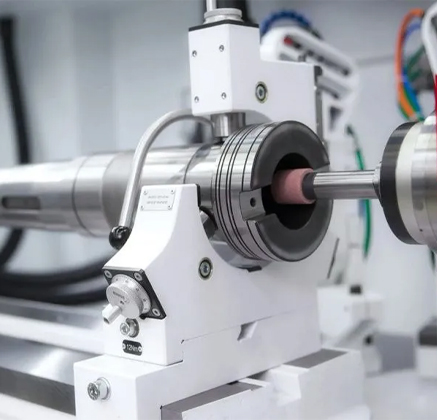Web Menu
Product Search
Exit Menu
Transfer CNC Machine Applications Expand Across Custom Machining Lines
The use of Transfer CNC Machine systems has gradually expanded across various custom machining lines. These machines are well-suited for operations requiring consistent and efficient material processing. Their ability to manage multiple tasks across a single sequence has made them a practical solution in many industrial workshops. As manufacturers look for greater flexibility and smoother automation, more attention is being directed toward combining such systems with intelligent support components like the Aggregate Machine Servo.

One of the advantages of using a Transfer CNC Machine lies in its capability to perform several operations without needing to move the workpiece between different stations. This setup not only improves time management but also maintains dimensional accuracy throughout the production cycle. As industries face increasing demand for customization and faster turnaround, these machines are being adapted into more tailor-made assembly lines.
The inclusion of Aggregate Machine Servo units in these systems has further enhanced their practicality. These servo-driven units are responsible for ensuring consistent speed control and torque delivery across a variety of motion axes. By integrating the Aggregate Machine Servo, engineers can fine-tune specific movements, allowing the Transfer CNC Machine to handle both basic and more specialized tasks without compromising repeatability.
Some facilities have implemented configurations where the Aggregate Machine Servo governs auxiliary functions such as drilling angles or spindle positioning. This support is particularly useful in manufacturing sectors that require frequent adjustments without halting production. Since each servo module operates independently, they contribute to the overall efficiency of the machining process when linked with the Transfer CNC Machine setup.
Several custom machining lines now rely on these technologies to produce complex components in shorter cycles. This combination of hardware gives manufacturers more control over production parameters. When a Transfer CNC Machine is paired with a responsive Aggregate Machine Servo, it becomes possible to reprogram functions quickly for different projects, a feature increasingly valued in small-batch and mid-volume productions.
The Aggregate Machine Servo also contributes to energy regulation. Through real-time feedback, the servo systems can help less waste by adjusting power based on the specific task. When applied in conjunction with the Transfer CNC Machine, this energy-conscious design allows for smoother transitions between operations without excessive power consumption.
Some fabrication environments have even expanded their automation zones, adding multiple Transfer CNC Machine units connected through centralized servo-driven networks. Each unit, equipped with an Aggregate Machine Servo, communicates via programmable control systems. This not only supports synchronization between machines but also simplifies troubleshooting and reduces downtime.
In highly customized machining workflows, where tool changes and variable speeds are necessary, the Aggregate Machine Servo becomes a crucial component. Its integration into the Transfer CNC Machine allows seamless adaptation to different material types and shapes. This synergy has supported the evolution of machining lines from rigid structures to more dynamic configurations.
As new production demands continue to emerge, it’s evident that the Transfer CNC Machine and Aggregate Machine Servo pairing will play a growing role in supporting adaptable, multi-step manufacturing. Their combined capabilities not only streamline workflow but also open up new options for precision and versatility.
By adopting such integrated systems, facilities are better positioned to meet specific production goals while remaining agile in their processes. The expanding use of the Transfer CNC Machine, together with the advanced control offered by the Aggregate Machine Servo, marks a significant shift in how modern machining operations are structured and managed.
- No.1-2,24th Street, Eastern New District, Wenling City.Zhejiang Province
-
+86-13906540425
+86-13566858277
+86-576-87168388
+86-13757649712 - +86-576-87168398
- [email protected]
[email protected]
 Privacy
Privacy



 русский
русский Español
Español